Meditation Techniques
Meditation is an advanced technique built on the mastered ability to concentrate and relax deeply. The basics of meditation is the awareness of the present moment resembling the state of sleep, but with the mind awake. We do not remember or plan anything.
In the meditative state, the mind does not need any phenomena or objects, and it stays in general observation. The mind is the one who observes, but it is also the object of the observation. This state is called dhyana in yoga, the observer blends with the object of observation and with observation itself.
When meditating, ideas or thoughts may enter the mind. If we do not pay attention to them, they slowly fade away. There may also be feelings of levitation, head turning, body swinging or leaving the body. These phenomena accompany the changed state of consciousness.
From the physiological angle, many changes take place in the body during relaxation, such as a reduction in muscle tension and blood flow, a fall in body temperature, a slowing of the pulse, the respiratory rate and the metabolism. The frequency of brain waves drop to alpha level (7-14 Hz).
At the psychological level, meditation can have beneficial effects on releasing anxiety and reducing stress. It improves our sleep, relieves insomnia, and helps to gain emotional stability.
Asanas for Meditation
Sukhasana
| Starting position | In the basic sitting position, with palms on the mat (Picture 1). |
| Action | Cross your left leg, placing it under your right thigh. Then cross your right leg, placing it under your left thigh. Put your hands on your knees (Picture 2). |
| Precision points | Pay attention to the upright spine. The asana prepares for more advanced meditation poses. Since only a small part of the sitting area touches the mat, it is exhausting for long-lasting meditations. |
| Purposes | This asana relieves the hip, knee and ankle joints, while accelerating the blood circulation in the pelvis and calming the mind. |
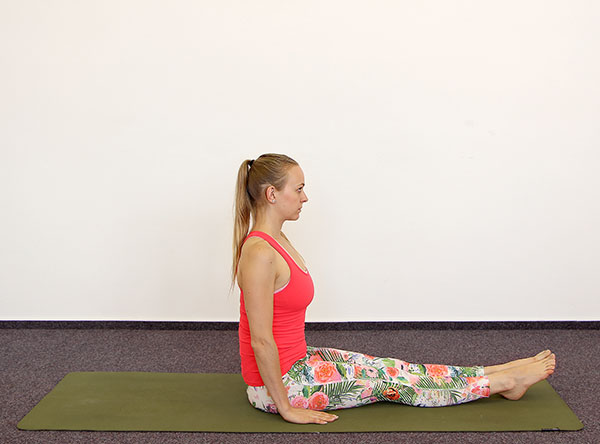

Vajrasana
| Starting position | Sitting on heels, with hands resting on thighs. |
| Action | Sit on your heels, and put your hands on your thighs (Picture 1). |
| Precision points | We pay attention to the upright spine. The asana prepares for more advanced meditation poses. |
| Purposes | This asana relaxes the spine, improves the digestion and stimulates the sexual organs. |
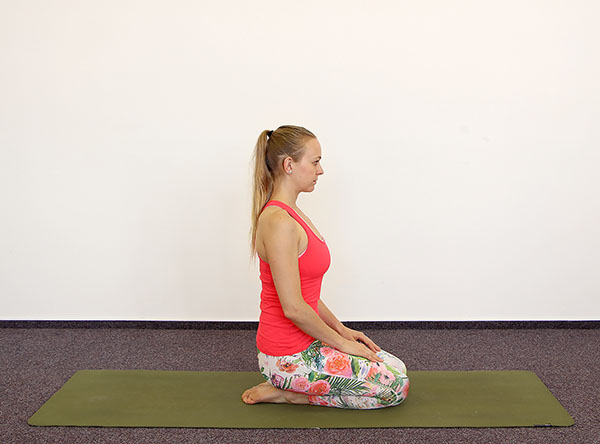
Padmasana
| Starting position | In the basic sitting position, with palms on the mat (Picture 1). |
| Action | Cross the right leg, using your hands to place the outer side of the right foot on the thigh of the left leg. The instep is on the groin and the foot turned upward. Then place your left foot on your right thigh in a similar way. Keep the knees on the ground. Place your hands on your knees and form the gjan mudra. Tilt the head forward slightly (Picture 2). |
| Precision points | Be careful to keep the spine upright. Do not force your feet onto your tighs agressively. Only practise in the asana if you are able to place your feet there without using hands. |
| Purposes | This asana has a healing impact on the whole organism. It calms the mind and deepens the meditive state. |

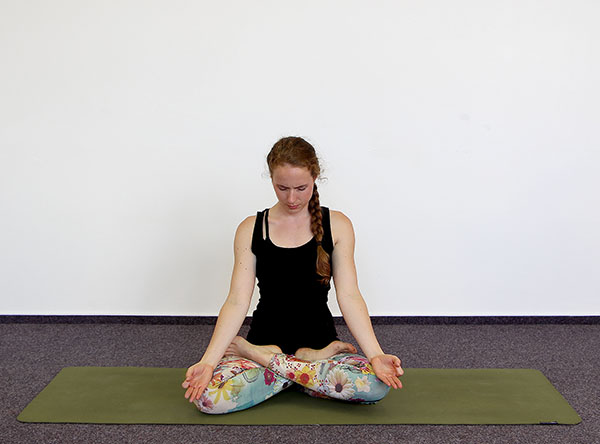
Dhyana veerasana
| Starting position | In the basic sitting position, with palms on the mat (Picture 1). |
| Action | Cross the left leg, putting your left heel next to your right buttock, while keeping the instep on the mat. Then cross your right leg, placing it in a similar way beside your left buttock. Keep your knees above each other. Put your hands on your knees (Picture 2). |
| Precision points | Be careful to keep the spine upright and to breathe regularly. |
| Purposes | This asana stimulates the ovaries and other sexual organs. It also influences the metabolism. It is recommended as a prevention of diabetes. |
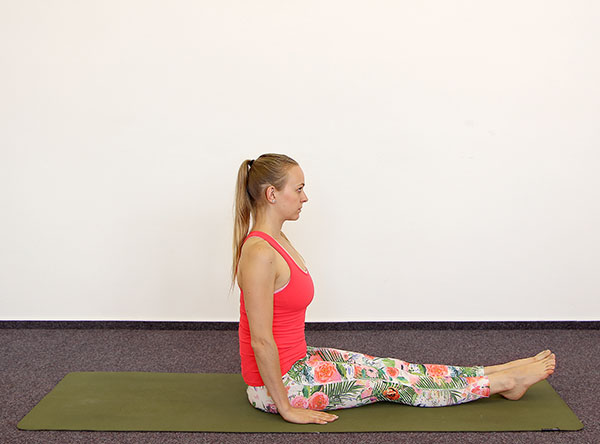
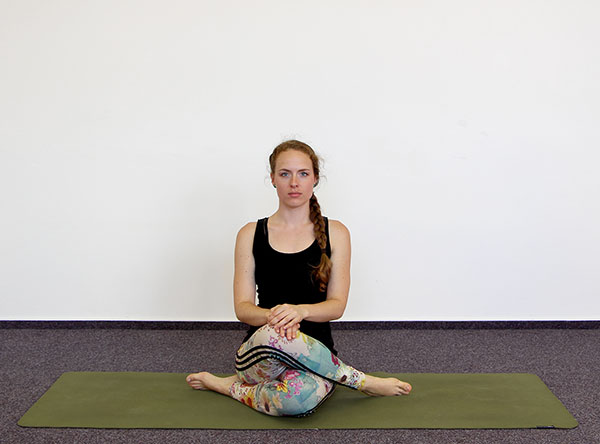
Types of Meditation
Meditation concentrating on the motionlessness of the body
This technique can be performed in any meditation asana, with the hands possibly in gján mudra. We select a pose, make sure it is comfortable and stay in it for 30 minutes without moving. The only movements are the ones related to breathing. We start by focussing on the rhythm of breathing. If there is any need to move, we only register and observe it, but we do not move. We feel that our body is solid (e.g. like stone, plaster or concrete). Then we observe any changes in the depth of breathing and its rhythm. We perceive the gradual calming and silencing the mind. We remain in this resting state until the end of meditation. We finish the technique with three repetitions of the mantra "Om".
Meditation Ajapa Japa
The technique can be performed in any meditation asana. It works with breathing and mantra repetition ("So Ham" or "Om"). We focus our attention on repeating the chosen mantra, the rhythm of its sound. We repeat the mantra in the rhythm of our natural breath. After a certain period of time, we do not need to repeat the mantra any more, it begins to resonate in our mind, "it becomes a part of us." The breathing rhythm can change – it can slow to 15 breaths per minute or even to 2-3 breaths per minute. The length of the meditation depends on how advanced our meditation practice is.
Meditation on inner silence
The technique can be performed in any meditation asana. The meditation on inner silence or inner peace focuses on the ability to think and search for the sources of our inner anxiety. If we uncover this source, we pay attention to it until our mind is saturated with this source of restlessness. Then comes the time to "get rid of it so it never comes back ". This is how we process the information coming to us from the outside, but also the information stored in our consciousness in the form of thoughts, emotions, phobias and so on. Subsequently, some images can be washed out of our subconscious mind, which can be difficult to understand or grasp. These are necessary to be processed too, to understand their meaning, and then to let them go. If we let this state go away, our mind becomes clean and empty and we are enveloped in inner silence and tranquility.
Meditation in yoga nidra
The technique can be performed in any meditation asana. Yoga nidra, or yoga sleep, is a state when our mental activity is similar to the state of deep sleep, but the mind is conscious. This state resembles the time before we fall asleep, when the body and mind are in a deep physical, mental and emotional relaxation. As a meditation technique, it is advisable to practise it for at least 30 minutes. First, we begin to prepare, we adjust the body to a relaxation position and relax. We continue by inserting our wish into our consciousness and repeating it. We gradually feel individual parts of the body; we perceive our inner space, our feelings and breathing. We use visualization. Yoga nidra ends in a conscious recall of our wish.